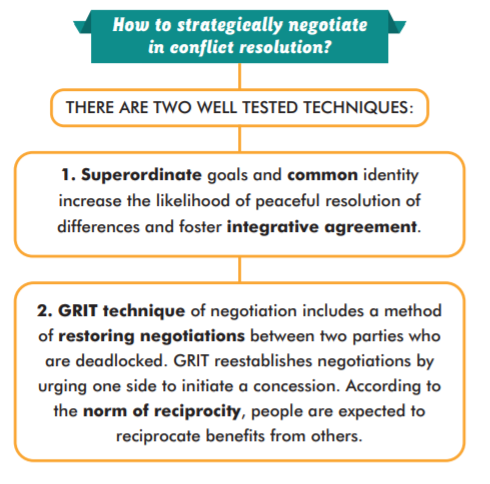Today we will talk about negotiation and leadership. People are mutually INTERDEPENDENT. Therefore, the conflict is INEVITABLE, but the combat is OPTIONAL. The consequence of a conflict is the negotiation leader has to undertake in order to resolve the differences. It has been estimated that UP TO 80 % OF LEADERS TIME is spent in negotiation with team members, partners, opponents, competitors, buyers, followers or significant others.

Here are some PROCEDURES you might use to help you during negotiation.
1. COMPROMISE – create new better solutions for both parties or you might both give up something.
2. AVOID negotiation – sometimes it is not worth your time or the bother. Let it go!
3. APOLOGIZE – Say “Thank you” when someone else says “Sorry”.
4.SHARE understanding – people feeling are more important than things.
5.TAKE TURNS – Everyone is Ok. Listen to the other.
6. GET HELP – ask for an advice a negotiation expert.
7. TAKE CHANCE – luck decides who will win. Toss a coin.

If you decide to COMPROMISE, use the basic rule I have learned as the hungry student trying to win the larger slice of the pie than my roommate. Do not compete with your opponent over a larger slice but agree with him to bake a new larger pie so that even the loser will have more pie than the previous winner. Creatively enlarge the pie, and both of you will be pleased. Apply this to most negotiation situations, and you might be surprised to find how successful you will be as a negotiator.
Now, all that is missing is how to do it! Here are 11 tips that might help you.
- Choose a good venue to talk
- Commit to finding a solution that satisfies each party
- Listen carefully and restate what you have heard
- Remain calm and avoid becoming defensive
- Talk about the issues, not the people
- Use “I” statements
- Acknowledge points of agreements
- Describe your emotions
- Be specific in describing what you need
- Be open to CREATIVE solutions
- Defuse the tension in negotiation, using phrases like: “I appreciate your perspective” or “I understand your expectations” or “What I heard you say is…” or “How can we resolve this“.

We might negotiate over vanilla ice-cream, or over the value of one million euros, or for the 1500 human lives but the negotiation process is the same. FIVE BASIC RULES do apply.
1. remember you are in a POWERFUL POSITION if you believe you are. If you convey self-confidence to others, they will perceive you as being more powerful.
2. CHANGE your behavior from adversarial to cooperative. Even if a negotiation partner is rude and unpleasant, don’t imitate him but try to understand the source of his behavior, and set a better example.
3. DEVELOP TRUST BY LISTENING. We trust people who pay attention to our needs.
4. You can arrive at a solution that addresses everybody’s needs, known as INTEGRATIVE AGREEMENT. The only limit is your own creativity. Therefore, explore options for mutual satisfaction.
5. Be open to all solutions but NOT NAÏVE. Because a negotiation is all about “give and take” concession is part of the negotiation, but remember whenever you GIVE something away, always GET something in return.
POWERFULL NEGOTIATION STRATEGY
Do not negotiate about POSITIONS but INTERESTS. Remember two well-tested negotiation techniques from social psychology.
1. SUPERORDINATE goals and COMMON identity, increase the likelihood of peaceful resolution of differences and foster INTEGRATIVE AGREEMENT.
2. GRIT TECHNIQUE of negotiation includes a method of RESTORING negotiations between two parties who are deadlocked. GRIT reestablishes negotiations by urging one side to initiate a concession. According to the NORM OF RECIPROCITY, people are expected to reciprocate benefits from others.

I guess this is plenty for a five-minute video. If you want to experience the content mentioned in actively and apply it to a real-life situation, join our joyful leader’s workshop. Until then, what do you think about this sentence “You do not get what you DESERVE, you get what you NEGOTIATE”. Stay well!
SOURCES:
- Petar Turčinović, Joyful Leadership Manual
